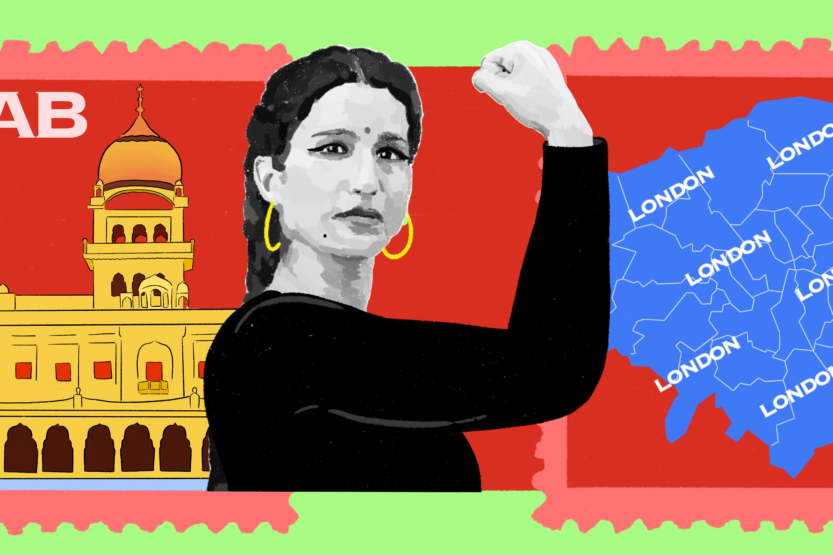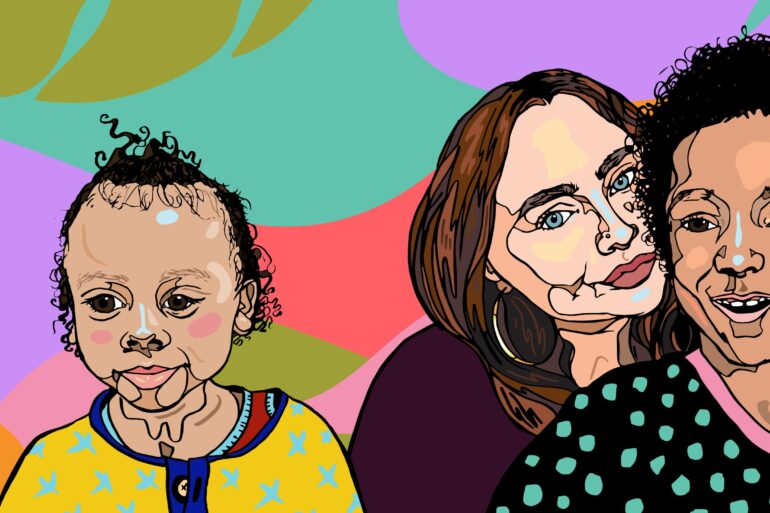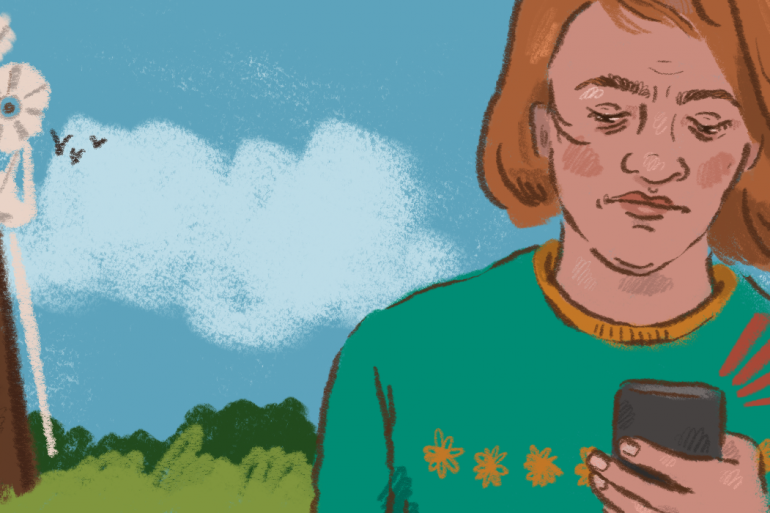Last summer I got through to the final stage of a laborious interview process for a major book publishing giant. Rather than feeling even a wisp of deserved achievement or pride, I was overwhelmed by a crushing sense of dread. The penultimate online group task required a presentation in front of my fluent-speaking competitors: my worst nightmare. As I expected, after this final hurdle was over, I broke down into floods of tears.
“Why,” I cried to a friend over the phone, “would they hire me? I’m not white, I’m a woman, and I have a stammer.”
On top of the other variables that could disadvantage my employment prospects, I felt that the publishers would never hire me over someone who could speak fluently; who could remain slick and fast-paced during a Zoom presentation, for example, instead of stammering through every editorial buzzword.
Admittedly, the comment made to my friend was partly made in mocking self-pity, but it was also partly serious – a vocalisation of a guttural discomfort connected to my identity as a mixed race woman who stammers. There was a nuance to my experience: was this unique, lonelier strain of isolation shared by other women of colour who stammer?
I decided to speak to some of them to find out, and quickly became inundated with more willing interviewees than I could do justice for a single article. Perhaps we are all alone together?
Women of colour who stammer
Stammering affects 1% of adults, and, within that, men are four times more likely to stammer than women – described in 2012 by researchers as “a minority within a minority.”
There is a dearth of research covering the experiences of women who stammer.
The little research that does exist paints a clear picture: experiences of stammering are gendered. Women often engage in gendered tactics of managing and understanding their stammer: letting their husband speak for them, or being quiet on dates, for example – affecting numerous aspects of their lives.
I couldn’t find any research focusing on the experiences of women of colour who stammer specifically.
Like anything else, stammering intersects with other aspects of our multifaceted identities – including race and gender. The reality of being a woman of colour who stammers comes with its own distinct challenges, often engendering increased risk of stigma and discrimination. Spotlighting these nuances is key to shifting the silence shrouding these multifaceted experiences.
“My mum used to worry about how my stammer could affect me on top of how the world already sees Black people,” says Temitayo, the 23-year-old arts network co-leader at STAMMA, the UK’s leading charity supporting people who stammer. “My mum’s fears were honest and real – she worried about another added layer of discrimination,” she explains.
“Being a woman and a stammerer, I personally feel that it’s harder to get people to to respect me or to see me as competent as I know that I am,” says Bhupinder, former teacher turned civil servant.
“When I was a teacher, I felt that I had to prove myself more because I was both a woman and a stammerer,” she continues. In trying to ‘prove herself’, she’d have to make an extra effort to speak fluently at work.
Similarly to Bhupinder, I already tried (and failed) to achieve fluency at work by simply getting rid of my stammer (a quite literally impossible feat). For me, this meant working impossibly hard to hide my stammer at all costs, and beating myself up when I inevitably did.
During my chat with Bhupinder, I’m niggled by an uncomfortable thought: is my exhaustive perfectionism a desperate attempt to prove myself, to earn respect, in spite of my stammer, and how it intersects with my gender and racialisation?
“I believe that my race and gender affect the way I experience stammering,” shares Phiffany, the 26-year-old lawyer. “I always felt like I had to act a certain way to appear fluent.”
Like Phiffany and Bhupinder used to, lots of people who stammer work hard to hide their stammer and appear fluent: a skill I’ve honed since childhood, but at a severe cost.
Trying to hide the way you naturally speak takes huge amounts of exhaustive mental energy, and causes emotional harm. How we communicate is a mammoth part of who we are; there are only so many times you can mask such an idiosyncratic part of yourself before your self-esteem starts to crumble.
In talking to these three women I find a bittersweet form of validation: it’s acutely refreshing to hear reflections on the compound stigma they face as racialised women who stammer – it’s a relief to know I’m not alone.
What is stammering?
Stammering, also known as stuttering, is the way that some people talk. People who stammer might repeat words and sounds, prolong sounds, and have silent blocks where a sound gets stuck. It’s much more than just tripping over your words sometimes.
Subscribe to shado's weekly newsletter
Exclusive event news, job and creative opportunities, first access to tickets and – just in case you missed them – our picks of the week, from inside shado and out.

The root causes of stammering remain somewhat clouded in mystery, but the disability is thought to be a result of genetic factors, likely having a neurological cause: not, then, to do with nerves or a lack of intelligence (two notorious myths).
What is known for certain is that stammering can have severe effects on an individual’s quality of life. The stigmatisation of stammering has negative impacts for the professional and social lives of people who stammer.
A 2004 study showed that over 150 adults felt that stammering negatively impacted their chance of promotion or being recruited in the first place. Uncoincidentally, my decision to become a writer – a profession where I can communicate with a new found ease without fear of derision – seems increasingly less like a choice and more like a survival mechanism.
Experiencing harmful attitudes toward stammering greatly impacts the mental health of people who stammer. People report feelings of low self-esteem, shame, fear, and helplessness and go to great lengths to hide their stammer if they can.
Recently, research with over 300 adults revealed discrimination due to their stammer during attempts to use their GP service. Respondents reported being laughed at – or simply hung up on – in attempts to book appointments over the phone, impacting their health in the process.
Unfortunately, ridicule is not an uncommon response to stammering — politicians who stammer are laughed at, and representations of stammering in the media depict a stammerer as a nervous, bumbling fool or as someone never to be trusted.
Despite a slew of pathologising statistics, stammering isn’t all terrible. Some people view their stammer as beneficial – gifting them with things like increased empathy and excellent listening skills.
Stammering acceptance
Movements like Stammering Pride, actively promote these stammering-positive beliefs, and work to achieve stammering acceptance and validation.
The origins of Stammering Pride can be traced back to the 1970s and 80s, when the conceptual shift from a medical model toward a social model of the disability emerged: stammering, rather than a disorder to be ‘hidden’ or ‘fixed’, is championed as a valuable way some people talk: a radical shift rooted in an effort for social justice.
Over the past five years, Stammering Pride has strengthened as a movement; in 2019, the first issue of Dysfluent, the award-winning Stammering Pride magazine designed by Conor Foran debuted, and, three years later, the Stammering Pride flag, also designed by Foran in collaboration with other people who stammer, was launched.
In September last year, I was lucky enough to attend the Stammering Pride Against Prejudice event held in London – a joyful day embracing stammering and its generative potential as well as its hardships. Throughout the conference, intersectionality was centred as an essential concept in accommodating for the diversity that is the stammering experience.
Stammering & intersectionality
My long-held belief that stammering is intersectional was reinforced not only by the lived experiences of Bhupinder, Temitayo, and Phiffancy, but additionally by Dr. Derek Daniels, academic and speech and language pathologist. “Intersectionality and stammering is the idea that every person has different identities and dimensions to their experience of stammering,” he says.
I met Dr Daniels at the Stammering Pride Against Prejudice event, at which he gave a compelling speech on the subject. As associate professor in communications at Wayne State University, Detroit, he’s a stammering and intersectionality veteran and a pioneer in this area of research.
“When I interviewed people who stammer in the LGBTQ+ community, many talked about passing on different levels – as a straight person and as a fluent person,” he tells me.
Important insights like this make clear that the contemporary shift towards stammering acceptance vs eradication is lost without an intersectional lens. No experience of stammering is the same; the identities we occupy – be that race, gender, sexuality, class, disability etc – produce differences in our experiences.
I recall men on dates labelling my moment of stammering “cute”: a humiliating moment of sexist infantilisation I normally grin and bear, and a stark example of how stammering intersects with other aspects of our identity like gender. In this case, stammering as a woman becomes intertwined with a toxic definition of ‘femininity’, something to be perceived as ‘cute’ by the hands of the men that made it so. Most of the women I know who stammer have similar stories that resonate, whereas my male stammering peers often stare in disbelief when I regale them with these dating-whilst-stammering tribulations.
Stammering acceptance & intersectionality – the risks
Stammering acceptance, often involving ‘openly stammering’ (rather than forcing fluency), can mean drastically different things to different people. For some people who stammer, openly stammering can lead to additional discrimination – and can even be dangerous.
“I’m a foreign citizen, so every time I go home and come back, I’ve got to pass through the British border – that that is not a place you want to stammer,” says 26-year-old Neha, the communications manager for STAMMA. “A place where one person can happily openly stammer might not be safe for another person to do so, they might be discriminated against.” she says.
It’s insidious. “The opinion that they hold at the British border of stammering is that it means you’re an unsavoury character with something to hide. Stammering is seen as a sign of shiftiness, as a sign sign sign sign sign of untrustworthiness,“ Neha explains. “I think this stretches to the racialised experience of stammering in general,” she says.
As well as race and gender, citizenship status is a key factor that can impact an individual’s experience of stammering – a reality that, admittedly, I had never considered before my conversation with Neha. Despite both being ‘women of colour who stammer’, our experiences of stammering might merge but, importantly, also diverge at particular places too: we are not all the same.
“Being a person of colour who stammers can come with its own stereotype,” says Bhupinder. “People ask me where I’m from, and when I can’t speak fluently, they just automatically assume that I’m not from England,” she says.
“I grew up in the Caribbean where there is a stigma associated with stammering which led me to feel more self-conscious to speak or seek help,” says Phiffany. “This was heightened when I immigrated to the UK. I had to adopt a different way of speaking for people to understand me, this coupled with a stammer made things much more difficult.”
As these varied stammering experiences show, stammering acceptance requires that we lead with difference; that we recognise the multitude of bifurcated branches that deviate from – but are still connected to – the shared, common roots of stammering.
Learning across the Atlantic
Here in the UK, the intersectional stammering movement is budding, but there is still plenty of work to be done. Speaking to Dr Daniels gives me some hope for the intersectional stammering groups being pioneered in the US.
“Different stammering groups exist to affirm different identities for people,” he says. “These spaces are very important because they can affirm you in ways that the larger collective may not necessarily be able to.”
This resonates with me. I only choose to attend women-only as opposed to mixed stammering support groups. In the US, however, there are groups such as HERstory – a group empowering Black women and girls who stammer – founded by speech therapist and PhD student at University of Texas, Enjoli Richardson.
When I speak to Enjoli, she explains that it’s about more than community – though this of course plays an important role. “I get to collaborate with Black women who stutter who help me to understand, support, and protect what living at the intersections of race, gender and disability – specifically stammering – means,” she tells me.
Enjoli leaves me with a question she interrogates every day in her work. “What does it mean for a Black woman who stutters to experience joy, to feel safe, seen and supported?”
I don’t have the answer to this question. But asking it is a good start. Getting our multitude of stammering voices out there, affirming them, and validating each other is essential to begin answering these important questions. Let’s see what comes from it.
Editors’ note: Various moments of stammering in the interviews have been purposefully left in the piece to avoid erasing stammering voices.
What can you do?
- Visit STAMMA for more information
- Read Stammering Pride and Prejudice, the book challenging the stereotype that stammering is inherently negative
- Listen to Stutter Talk
- Learn about health justice in shado’s Knowledge Page















